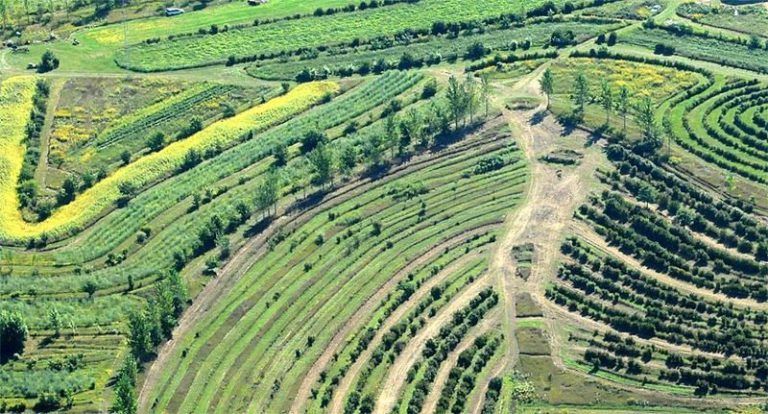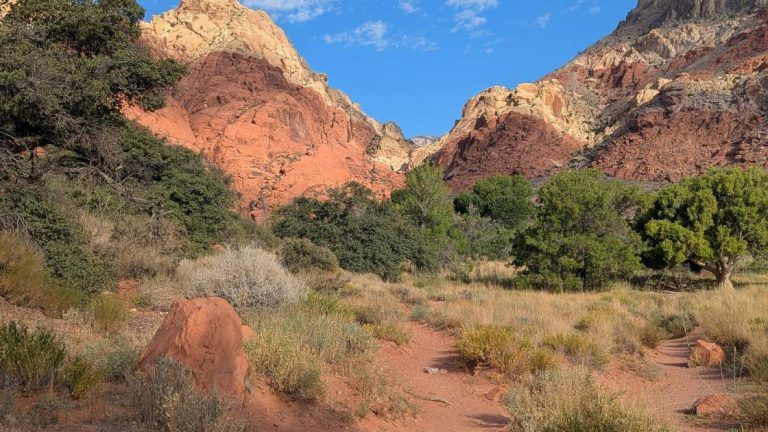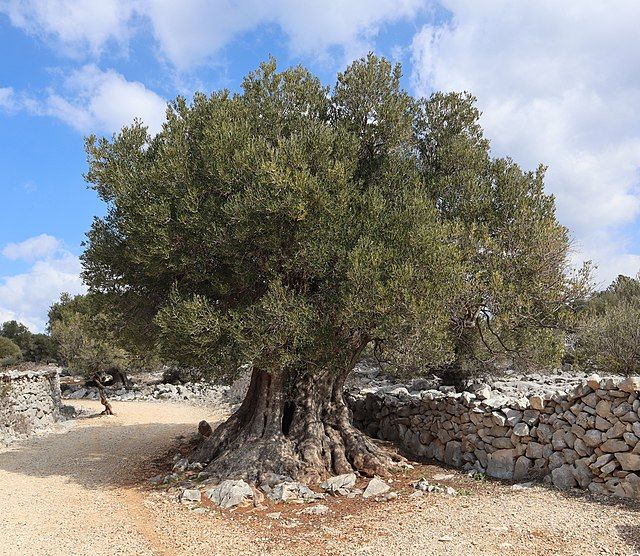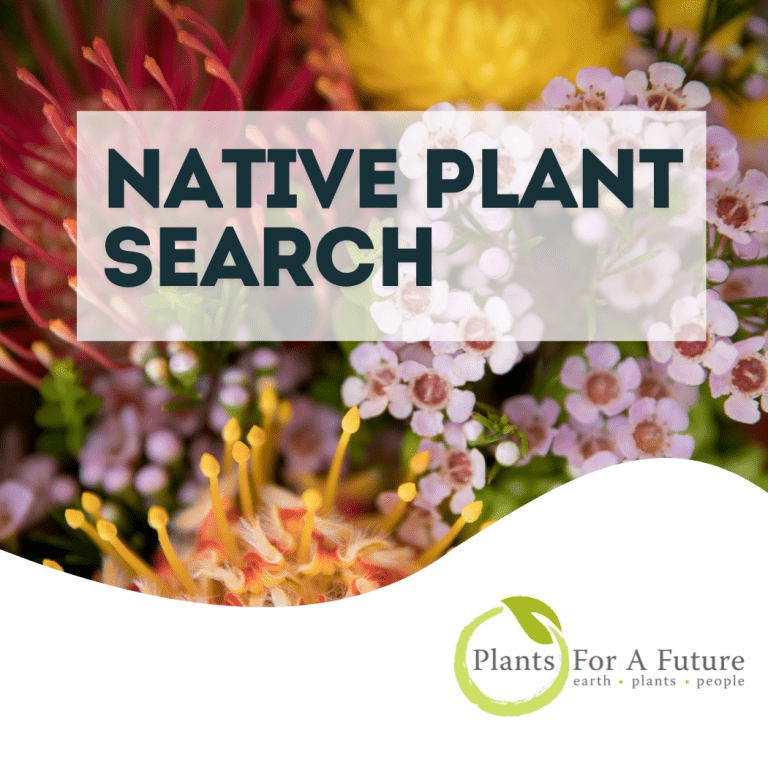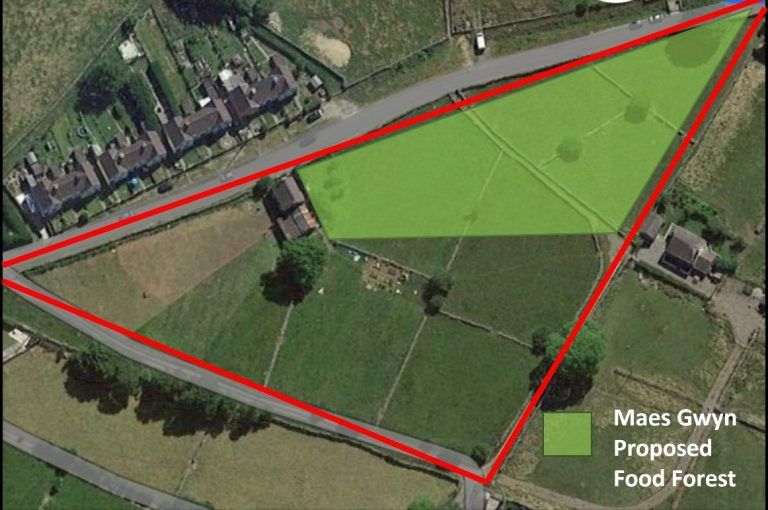In his book Half-Earth: Our Planet’s Fight for Life, Edward O. Wilson argues that the solution to the present planetary crisis is to dedicate half the surface of the Earth to wild nature.[1] The other half Earth would be used to meet human needs for food and everything else, including all our structures and materials. In a recent article in New Left Review Troy Vettese takes the half-earth idea as the basis of a scheme of Natural Geo-Engineering whereby reforestation would draw down sufficient carbon from the atmosphere to avert climate change.[2] In this article I present the case for a whole-Earth food forest. Food forests have triple potential: they can draw down carbon and meet all our basic needs at the same time, and they can also harbour nature, with every little bit of ground revived for us-in-nature contributing to the eventual whole.
The Plants For A Future (PFAF) database provides a great deal of information that whole-Earth food foresters will need in order to draw up planting schemes for combinations of useful species. Those who know the PFAF story will know that it was inspired by permaculture and Robert Hart’s Forest Garden.[3] In permaculture and PFAF circles will be found many people who would see the whole-Earth food forest as a realistic possibility, and some who are already working on it.[4] Those who are more sceptical should bear the Wilson/Vettese arguments in mind. Growing trees and other perennial plants, keeping the soil permanently covered and wild so that soil ecosystems revive, creating local climates and water and nutrient recycling, all require carbon from the atmosphere, whence the natural geo-engineering Vettese envisages, and the safeguarding of species and habitats Wilson is so passionate about.
Concern about climate change is rising, and hopes are dwindling that government policy and international agreements will address the complex of problems in time to avert disaster. Protests are becoming more determined and visible with campaigns such as Extinction Rebellion and the Children’s Climate Strikes inspired by the action of sixteen-year-old Swedish girl Greta Thunberg. The weakness of such protests is that they assume that governments are responsible for and are capable of finding and implementing solutions, and that governments can be goaded into action by the public. However, governments have many other priorities and are subject to intensive lobbying by those with vested interests in business as usual, so that any pledges and targets they make are bound to be too little and too late – unless, of course, business as usual is challenged by customers changing their buying patterns. For some years there have been Local Food movements around the world which have grown big enough to have economic clout.[5] PFAF has been contributing to that movement for about twenty years by providing information on different species and enabling the sharing of experience of growing the plants in different situations. Progress towards whole-Earth food forestry extends that involvement into designs that are part of the solution to climate change.
Food Forestry at scale as a climate change initiative can be termed Carbon Farming or ‘farming practices that sequester carbon’. Eric Toensmeier mentions that general definition in his book The Carbon Farming Solution,[6] but his project is more fully explained by the subtitle: A Global Toolkit of Perennial Crops and Regenerative Agriculture Practices for Climate Change Mitigation and Food Security. In his book Toensmeier identifies 700 plants which could be a critical part of the solution to climate problems and sets them out in a ‘Global Species Matrix’. In a collaborative response to Toensmeier’s work, PFAF has included details of all the 700 plants in our freely available plants database, with search terms appropriate to carbon farming as an aid to designers.
The PFAF database has details of over ten times as many plants as there are in the Global Species Matrix. The database has been built up over a long time, with new plants, more items of information and images, with an ongoing process of checking and research. There has been no overall practical purpose behind our huge collection besides providing a free online information service to people interested in useful plants. From website/database stats we know that accesses number in the millions each year. Amongst those users are many people who use the database on a regular basis, and even more who happen upon our site when searching for information about particular plants.
With whole Earth food forestry in mind, we would love to hear from users who have plots in which they are growing combinations of edible perennials. We would also love to hear from users who have experience of growing ‘food forest’ plants, because we are planning to add ‘food forest’ as a searchable term in the search facilities we offer on our home page https://pfaf.org , and on the page about ‘The Carbon Farming Solution’: https://pfaf.org/user/CarbonFarmingSolution.html .
To get in touch for this project, please email [email protected] or trustee Chris Marsh at [email protected] with ‘PFAF Food Forests’ in the subject. We look forward to hearing from you.
This introduction to ‘Plants to Save the Planet’ will be followed by sections on various aspects of ideas and practice, including:
The potential for natural climate solutions including food forests and rewilding.
Transition to more locally based economy to include food growing and distribution.
How less food transport will save energy and reduce the need for packaging especially plastic.
Programme of knowledge sharing.
Outreach and education on how local is better now and for the future.
How to use locally produced food, especially vegan organic, cooking and preparation from scratch.
Triggers for action, ecological and social.
Individual action pending localisation: boycotts, protests, lobbying.
Tagorean philosophy: rural reconstruction, transforming local communities, ‘life in its completeness’, joy and creativity, ‘without the greed of profit’.
And more…
[1] Edward.O. Wilson, Half-Earth: Our Planet’s Fight For Life (New York: Liveright, 2016)
[2] Troy Vettese, ‘To Freeze the Thames: Natural Geo-Engineering and Biodiversity’, New Left Review, 111 (2018), 63-86 (p. 67).
[3] ‘About Us: Plants For A Future’, https://pfaf.org/user/AboutUs.aspx, ‘Robert Hart’s Forest Garden’, https://pfaf.org/user/cmspage.aspx?pageid=93, Ken Fern, ‘What is Permaculture?’ in Plants For A Future: Edible & Useful Plants For A Healthier World (Clanfield, Hampshire: Permanent, 1997), pp. xi-xii.
[4] Featured Image is of Mark Shepard’s New Forest Farm which, in William Horvath’s opinion, is one of the best examples of a permaculture food forest. (https://permacultureapprentice.com/permaculture-profiles/new-forest-farm-mark-shepard-100-acre-15-years-of-establishment/ )
[5] Lester Brown, World on the Edge: How to Prevent Environmental and Economic Collapse (London: Earthscan, 2011), pp. 175-78.
[6] Eric Toensmeier, The Carbon Farming Solution: A Global Toolkit of Perennial Crops and Regenerative Agriculture Practices for Climate Change Mitigation and Food Security (White River Junction, Vermont: Chelsea Green, 2016), p. 6.

